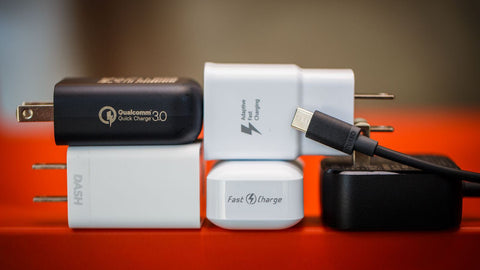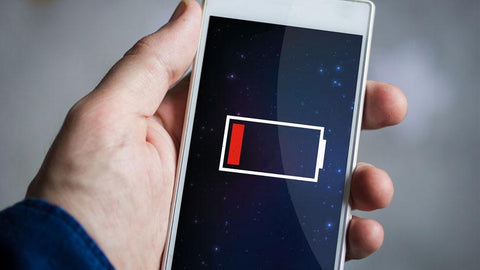What is Qualcomm Quick Charge Vs. Power Delivery?

With the heavier daily usage of smartphones, laptops and other digital electronic devices, faster power delivery has been an increasingly important factor to concern when considering updating a fresh device. While, phrases like “fast charging, quick charge, Qualcomm Quick Charge and USB PD” are really confusing, especially when talking about the most common fast charging technologies: QC & PD. Here may have covered everything you want to know about them.
What included in this Article:
- What is fast charging and how does it work?
- Qualcomm Quick Charge & Power Delivery Explained
- Qualcomm Quick Charge or Power Delivery?

What is fast charging and how does it work?
When comes to fast charging, the first impression it leaves to most people it is about a quick charging speed. But what does “fast” exactly mean? The charging speed is measured by wattage which is calculated by the product of volt and ampere. In other words, the higher the wattage of the battery delivers, the faster it charges. Then how much wattage your battery delivers can be counted to “fast charging”?
Generally, as long as the battery can supply a charging current of >9W (5V 1.8A), it can be counted as fast charging. So, obviously, QC2.0, QC3.0 and later versions of Qualcomm Quick Charge and PD technology are all fast charging technologies.
After having a simple idea of what fast charging is, let’s have a look on how it works.
Every battery consists of one positive electrode, one negative electrode and an electrolyte which catalyze reactions that convert compounds into new substances. And ions—atoms with too few or too many electrons—form in the electrodes, driving a flow of electrons to the battery’s negative outer terminal and supplying the smartphone with an electric charge. While, the speed of charging is related to something called “charge controller” which regulates the overall flow of electricity into and out of the battery. Generally, lithium-ion based controllers define the current (in amps) at which the battery charges by measuring the battery’s cell current and voltage, and then adjusting the current flowing in. Greater current and higher voltages charge batteries faster.

Qualcomm Quick Charge & Power Delivery Explained
There are many fast charging protocols in the market including Adaptive Fast Charging from Samsung and OPPO VOOC etc., but among them the Quick Charge from Qualcomm and USB Power Delivery from the USB-IF standards are the most commonly used protocols.
Quick charge is a proprietary technology which allows for the charging of battery powered devices, primarily mobile phones, at levels above and beyond the typical 5 volts and 2 amps which most USB standards allow for. Up to now, there are 4 versions of Quick Charge released.
To take advantage of Qualcomm Quick Charge, both the host providing power and the device must support it.
While, USB Power Delivery is a standard protocol from the USB-IF standards organization. It can be implemented over any USB connection, but requires new connectors and cables for full USB 2.0 connector support. The most famous phone brand adopting Power Delivery is Apple. You can enjoy a PD fast charging over USB Type-C to Lightning adapter for the use with iPhone 8 and X. However, you have to spend a lot of money for that because Apple doesn’t provide any of them. By comparison, Power Delivery can support voltages as high as 20V, and can support charging at up to 100W max.

Quick Charge or Power Delivery
It seems that PD can deliver a much higher power output, but actually most smartphones do not need more than 18w charging, that’s why Qualcomm’s Quick Charge is widely adopted by most of smartphones, while Power Delivery as a standard that anyone can use is more designed for larger devices like laptops and household appliances.
What’s more, Qualcomm announced Quick Charge 4.0 in 2016 which is compatible with Power Delivery. In other words, Quick Charge 4.0 has simply learned to speak PD language, but still does the same thing as Quick Charge 3.0 with a few upgrades.







Leave a comment